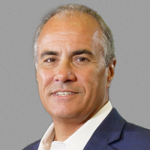Digital transformation continues to be the answer to many of the challenges still facing our healthcare system. The industry has been digitally transforming for decades now, but the sheer volume of data we are collecting now is continuing to drive innovation. And there is still nothing stopping it continuing into next year. Here is what the experts have to say. And join us for the next few weeks as we look at what we might see in 2023.
 Omri Shor, Founder and CEO, Medisafe
Omri Shor, Founder and CEO, Medisafe
Twitter: @medisafeapp
Incorporating digital health early – I believe that incorporating digital health tools earlier in the prescription process and combining digital with traditional medication therapy will increase in 2023. As more digital medication management solutions gain FDA approval, there is an increased opportunity to integrate digital support as part of the medication process and reduce medication abandon rates.
Combining digital companions with advances in immunology is a winning formula – We continue to see new advancements in immunology and see that segment as one that will grow to help patients with complex diagnoses. New vaccine therapies have shown tremendous advancements, and when combined with a digital drug companion, can help patients to manage the complex dosing schedules toward healing.
 Kenny Woods, Senior Vice President of Sales and Professional Services, CenTrak
Kenny Woods, Senior Vice President of Sales and Professional Services, CenTrak
Twitter: @CenTrak
How the data from RTLS can be used to improve the performance of hospitals and offsite healthcare facilities in 2023: Enterprise visibility is critical throughout the patient workflow process. Like any business, healthcare facilities rely on analyzing data when making decisions concerning facility performance, patient satisfaction, staffing, and long-term planning.
Leaving healthcare staff to juggle the needs of their patients with the administrative requirement of manual documentation can often be time-consuming and impacted by human error. RTLS leverages IoT-enabled devices to automate data collection, providing accurate insights whilst enhancing the patient care experience. As we move into 2023, he predicts that “more healthcare organizations will collect data from the different processes and systems throughout the building, facility campus, or health system to get the necessary information. I believe that more healthcare facilities will collect this information in 2023, and they’ll gain comprehensive insights on equipment utilization, workflows, patient/staff interactions, and safety compliance.
Advancements anticipated in the near future: Over the last decade, Real-Time Location Systems have progressed significantly as AI and machine learning have developed and taken root in healthcare. As automation technology develops, it enables faster completion of internal processes and administration steps. This will continue to change how we deliver care and provide more time for patients’ needs as we move into 2023. We’re already seeing these changes develop on the clinical side, and we believe it will quickly progress on the operational side.
As RTLS becomes more ingrained in hospital operations, we will see increases in predictive data, automated administrative needs, and reductions in cost. These will be crucial aspects of improving patient care in 2023.
At this time, around 30% of healthcare costs are on administrative processes. By reducing manual documentation, facilities can reallocate care time, increase response times, and experience cost savings. Through automating different processes in the future, clinicians will be able to spend more time being clinicians and less time on administrative tasks such as documentation. This progression is a win-win for patients, healthcare professionals, and facility administrators as we move into 2023.
 Stephen Dean, Co-Founder, Keona Health
Stephen Dean, Co-Founder, Keona Health
Twitter: @keonahealth
Last year I predicted 2022 as the year of telehealth burnout. The numbers back that up. Telemedicine use peaked during COVID and is stabilizing. For 2023, I predict that regulators will examine the data and increased fraud and extend the COVID telemedicine policies… with regulation attached.
Labor shortages will continue. First, healthcare will invest more in each worker. Everyone in healthcare is a knowledge worker, but healthcare’s knowledge workers have not received the support that their counterparts in leading industries receive. The largest differences will be felt first by non-clinical staff and secondarily by nurses as those positions receive greater pay, greater decision-making participation, and greater recognition in order to help staff feel valued and more likely to stay. Second, there will be a growth in automation tools that knowledge workers need to perform at full capacity.
 Dave Bennett, CEO, pCare
Dave Bennett, CEO, pCare
Twitter: @pCarebyTVRC
Advancements anticipated in the near future:
“When I think about the digital hospital of the future, I’m referring to digital transformation. It’s more than just using technology. It’s about new ways of delivering value,” shared Dave Bennett, CEO of pCare. “This will continue to change how we leverage technology to streamline and improve care for all stakeholders. It’s not about removing the human component but using technology at every step to optimize the experience for all parties.”
Bennett stated, “Cost and experience/expectations are the primary drivers of digital transformation, which will not slow down. Digital Transformation holds the promise to re-engineer processes to automate jobs that are increasingly difficult to staff. These tasks are often done cheaper and better, i.e., with fewer errors.”
 Rodrigo Martínez, Chief Medical Officer, PerfectServe
Rodrigo Martínez, Chief Medical Officer, PerfectServe
Twitter: @PerfectServe
Most health systems today still have a very siloed approach to communication investments. I like to break the current landscape down into five categories:
- Outbound marketing campaigns (for things like appointment reminders)
- Digital front door infrastructure (websites, chat bots, mobile apps as a portal into the system)
- Secure messaging (the modality by which care teams communicate about patients within the system)
- Telehealth (systems that support remote/video interactions with patients)
- Operational communications (pagers, paging systems, telephone systems used to handle inbound referrals/inquiries)
All of these channels are on a bit of a collision course as system leaders look to consolidate their tech stacks. In 2023, many will be looking for more extensible communication solutions that unite these functionalities, span the entire care continuum, and make it easier for clinicians to accomplish the day-to-day tasks associated with providing care. With ongoing budget challenges, staffing shortages, and elevated burnout levels, expensive point solutions can no longer cut it.
 Dr. Nick van Terheyden aka Dr. Nick
Dr. Nick van Terheyden aka Dr. Nick
Twitter: @drnic1
Host of The Incrementalist
Technology – home health and home monitoring technology coming of age and combined with large data processing that could make sense of all these new data points we might start to see the emergence of new a range of bio-markers to catch disease earlier allowing for more cost and clinically effective care to be delivered economically and at scale (by the open access primary care above). Watch especially for the passive systems – set it and forget it will win the day in health monitoring.
 Dave Wessinger, Co-Founder and CEO, PointClickCare
Dave Wessinger, Co-Founder and CEO, PointClickCare
Twitter: @PointClickCare
Big tech disruption in healthcare is just a flash in the pan: It’s been so hard for technology behemoths to disrupt the healthcare industry with sustainable longevity. Amazon has tried: first with First Haven (JPM/Berkshire Hathaway) and most recently with Amazon Care. However, healthcare isn’t just another verticalized business venture – it’s much more complex. In 2023 we will see a continuation of this ‘failure to launch’ across big tech because of a lack of specialized, insider knowledge involving the many facets of healthcare delivery. Instead, we will see new, innovative startups with investors that truly know healthcare emerge and evolve in step with what has been regarded as the status quo for too long. As technology and patient expectations become more intertwined, healthcare delivery and big tech will stay separate in a big way (at least for the time being.)
 Dr. Yossi Bahagon, Chairman, Sweetch
Dr. Yossi Bahagon, Chairman, Sweetch
Twitter: @SweetchHealth
In 2023, wearable usage will increase, and the ability of wearables to aid in detection and prediction of medical complications will begin advancing.
 Eran Eshed, CEO and Co-Founder, Fairtility
Eran Eshed, CEO and Co-Founder, Fairtility
Twitter: @fairtility
IVF Post-Covid – Increased Demand
As clinics reopen their doors to patients, while the medical industry settles after the latest spikes in Covid-19, patient demand for IVF is higher than ever. The devastating impact of the pandemic on IVF resulted in delayed treatment for many prospective parents who are up against the clock. Coupled with the global shortage of embryologists to meet the growing need for IVF treatment, the advancement of IVF technology to automate routine processes for IVF professionals, could bring significant operational and clinical efficiency to embryology labs, enabling each embryologist to handle more IVF cycles without increasing the administrative burden.
 Mandira Singh, SVP, GM, Acute and Payer Markets, PointClickCare
Mandira Singh, SVP, GM, Acute and Payer Markets, PointClickCare
Twitter: @PointClickCare
Healthcare will catch up to other industries: Imagine a world in which vitals were automated and efficiency gain was easy to calculate. The automotive industry has mastered this technology with “crash-proof” cars and even auto-pilot airplanes, but a similar wave is coming to the healthcare industry in 2023 through even more advanced remote patient monitoring tools. We have spent the last 100 years paying a smart, well-educated healthcare professional to walk room to room every four hours collecting 4 sets of patient vitals data per day and nothing here has changed over time. What we are about to see in healthcare is overdue. Looking ahead, we are entering one of the most profound moments in the history of human medicine. The future of care comes back to leaning on technology to improve the way clinicians can collect and share data more efficiently and at a higher frequency.
 Rob Stuart, CEO, Claim.MD
Rob Stuart, CEO, Claim.MD
Twitter: @ClaimMD
In looking at trends for 2023, I see more healthcare stakeholders adopting electronic workflows – especially for administrative and reimbursement purposes. Now, of course, this has been an ongoing trend for many years, but following the chaos of the pandemic, this push will increase exponentially – and we’re already seeing signs of this with our own customers. Shifting to electronic medical transactions, including submitting and viewing electronic remittance and reviewing benefits and eligibility in real-time, will be crucial for both providers AND patients. This will allow them to not only regain lost efficiencies, but contain costs in today’s economic climate.
 Wes Cronkite, Chief Technology and Innovation Officer, CPSI
Wes Cronkite, Chief Technology and Innovation Officer, CPSI
Twitter: @cpsiehr
Recent digital health investment declines and layoffs have showcased that many of the new solutions that were seemingly thriving through the pandemic have run out of fuel in the endemic new reality. That sparse fuel is primarily composed of integrated and unified data. Health system CIOs in 2023 will invest heavily in getting their data lake houses in order to prepare for the rising patient expectations around digital health, use their data to infuse more clinical and financial insights, and utilize automation to help with staffing shortages and reduced budgets to manage.
There will be a focused effort on cleaning out the technical debt, as well as a critical eye on the number of distinct health tech solutions in play at providers, with a goal to consolidate and integrate at a deeper level to improve both clinical workflows and patient experiences. Contrary to the provider staffing woes, in 2023 the core health tech space should see an infusion of talent, either from those who were chasing unicorns in the digital health space or those impacted by other industry staff reductions in big tech.
 Ron Gaboury, CEO, Caregility
Ron Gaboury, CEO, Caregility
Twitter: @caregility
Healthcare Providers will Consolidate Siloed Telehealth Programs onto Platform-Based Solutions – Given the tough economic conditions of the past few years, consolidation will be a key driver in health IT initiatives in 2023. Providers will look to centralize siloed telehealth programs onto platform-based solutions that are flexible enough to 1) support use cases across the enterprise, and 2) support integration with innovative connected care devices entering the market. The proper implementation and timely deployment of these resources will play an important role in supporting quality care delivery with a diminished healthcare workforce.
 Grace Nam, Strategic Solutions Manager, Laserfiche
Grace Nam, Strategic Solutions Manager, Laserfiche
Twitter: @laserfiche
Embracing digital workflows and modernization will be transformational for healthcare systems in 2023. Technology will improve and reform workforce structures to eliminate staff burden and burnout and create new opportunities for upskilling. Career growth opportunities and ease of use for employees will be critical to providing quality support to patients. Additionally, secure electronic documentation tools will be used to store key data, such as around a patient’s visits and medical history, and create clear treatment plans and monitor progress. This will, for example, enable the interflow and exchange of patients’ clinical lab results between clinical workforce and medical staff.
Overcoming staffing shortages will be top of mind for health care operators in 2023. More than ever healthcare professionals want to focus on things that matter, such as patient care and outcomes, versus tedious and time-consuming tasks such as paperwork. As such, digitalization will be used to streamline and centralize documents and information, improving staff and patient experiences; better integrate departments to drive collaboration; and eliminate data silos and capture metadata/auto-populate metadata. Automation will be used to improve operational efficiency and staff experience across the board — organizations who do not embrace automation and digitalization will struggle with employee retention.
 Siva Namasivayam, Co-founder and CEO, Cohere Health
Siva Namasivayam, Co-founder and CEO, Cohere Health
Twitter: @CohereHealth
Innovation often begins in the Medicare space, but 2023 will see the reigniting of public policy around electronic prior authorization across commercial plans as well. To have a significant impact on the cost and quality of care, health plans will need to broaden their perspective on the purpose of utilization management. By adopting intelligent prior authorization solutions, health plans can exceed legislative and regulatory requirements for greater automation and faster approvals while also achieving better outcomes for their members.
 Kimberly Hartsfield, Executive Vice President, Growth Enablement, VisiQuate
Kimberly Hartsfield, Executive Vice President, Growth Enablement, VisiQuate
Twitter: @VisiQuate
As health care organizations emerge from the height of the pandemic, they find themselves facing the combined challenge of lingering COVID, plus flu and a resurgence of RSV in 2023. Going forward, health care organizations are going to have to embrace technology like never before. We’ll never go back to “the way we did things before.” Savvy health care leaders will invest in technology and analytics, so they have the visibility to manage operations using a data driven approach. The cost of doing nothing is way too high and filled with more risk than is acceptable. In 2023, technology is the answer for effective revenue cycle management, as health care organizations continue to struggle with staffing issues and unparalleled cost pressures.
